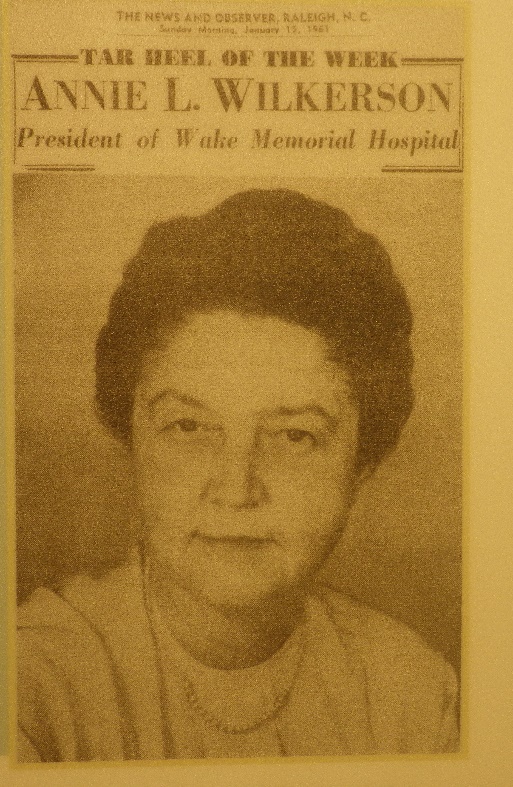by Bryan England
Preserve Manager, Annie Louise Wilkerson, MD Nature Preserve Park
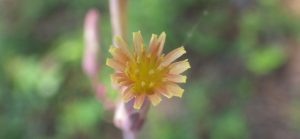
In the summer of 2021, the UNC-Chapel Hill Herbarium received an unexpected specimen, a rare native wildflower known as “red wood lettuce” (Lactuca hirsuta), which had not been collected in the North Carolina Piedmont in over 50 years. According to Bruce Sorrie and Harry LeGrand, “[Lactuca hirsuta] has clearly declined in [North Carolina], apparently alarmingly, and few if any recent botanists/biologists have seen it. Thus, [we] are making a drastic suggested State Rank of S1? [the highest State Rarity rank] and believe that it should go onto a Watch List, and probably onto the Significantly Rare list. The disappearance of the species from NC mirrors that from some or many other areas within its fairly large range; perhaps it was adapted to fire for survival.”1 This welcome re-discovery of red wood lettuce came from an unexpected place – “Annie Louise Wilkerson, MD Nature Preserve Park”. Where is this Park? Who was Dr. Annie Louise Wilkerson, and what does she have to do with rare plant conservation?
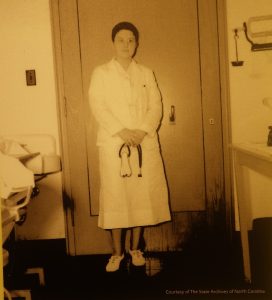
When Dr. Annie Louise Wilkerson was honored with the North Carolina Award for “Science” by the Governor in 2004, the emphasis was on her pioneering career in medicine. After earning her B.S. from the University of North Carolina at Chapel Hill in 1936, the young Annie defied expectations by earning her M.D. from the University of Virginia and then returning to Raleigh to practice medicine. During her 40-year career as a physician she achieved many “firsts”: first female intern in a Raleigh hospital (to overcome resistance to having a female intern, she agreed to work for free and live in the maternity ward at Rex Hospital); first female resident at Rex Hospital; first female OB/GYN in Raleigh; president of staff at Rex Hospital; and president of the Wake County Medical Society. She was the first chief of staff at the new Wake Memorial Hospital. Wake Memorial led the racial integration of Raleigh’s hospital system. She was also a leader in support of medical education and research, sponsoring the creation of two professorships at UNC-Chapel Hill — one in family medicine and one in obstetrics and gynecology.
Aside from all her accomplishments in medicine, Dr. Annie (as she was widely and affectionately known, to avoid confusion with her father and brother, who were also “Dr. Wilkerson”) was also quietly planning to leave a legacy in conservation. In the 1950’s Dr. Annie purchased a small farm in what was then a remote part of northern Wake County near the Neuse River. From this start of mostly cow pastures, Dr. Annie gradually purchased adjacent parcels. These parcels contained a variety of forest types. Some parcels were mature stands of mesic hardwoods, with majestic American beeches and 200 year-old white oaks. Other parcels contained rocky ridges with post and blackjack oaks mixed with sand hickory and shortleaf pine. Other areas were secondary forest dominated by mature loblolly pine. Others were seepage wetlands with sweet bays and swamp tupelos. Although she was advised that these areas of mature trees could be logged for profit, Dr. Annie instead held onto these lands as she acquired them, without selling off the timber.
In the early 1990’s when Dr. Annie learned of another adjacent parcel containing a small flatrock that was going to be sold off and densely developed, she acted quickly and purchased it herself, despite the fact that it cost more than what she had spent on all her other properties up to that time.
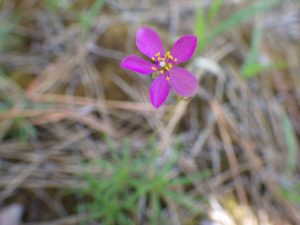
As a result of her sacrifice to save this remnant flatrock community, readers of the North Carolina Botanical Garden’s 2019 book Wildflowers of the Atlantic Southeast will find a photograph on page 357 of Appalachian Rock-pink (Phemeranthus teretifolius) that was taken at the flatrock Dr. Annie preserved.
As the years passed the municipal limits of Raleigh expanded until they reached the edge of Dr. Annie’s farm. Knowing her land was now worth millions to developers, in her Will Dr. Annie left her entire 157-acre property to the City of Raleigh as a free gift – on the condition that it be a “nature preserve park” used for the “primary purposes” of “nature education” and “research into the methods of conservation.” “General recreation” was to be forbidden, as was any future selling of timber or the construction of new buildings at the expense of the property’s natural areas.
When Dr. Annie died in 2005 the City of Raleigh had never had a nature preserve park – but in order to accept the terms of her gift (and a property valued at over $15 million at that time), the City of Raleigh soon created a new nature preserve park classification where conservation, rather than general recreation, would take priority. Shortly thereafter several other City of Raleigh properties were also designated official city nature preserves under the new classification. Among the current Raleigh nature preserves are two areas identified as Significant Natural Heritage Areas by the NC Natural Heritage Program: Horseshoe Farm on the Neuse River and the southern shores of Lake Johnson.
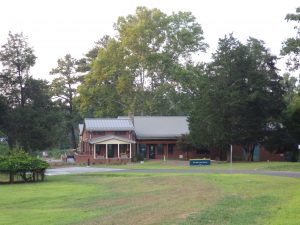
In 2011 Dr. Annie’s farm (with its forests, fields, wetlands, and rock outcrops) opened to the public as Annie Louise Wilkerson MD Nature Preserve Park. This year, 2021, marks the 10th anniversary of its public operation. Tens of thousands people visit every year to enjoy the miles of hiking trails and natural scenery, but the Preserve retains what many call the most peaceful atmosphere of any park in Raleigh. Just as Dr. Annie desired, nature education remains a primary purpose — educational programs for groups and visitors of all ages serve several thousand annually with classes on everything from astronomy to zoology, with many adult and youth groups requesting custom nature programs on specialized topics.
Dr. Annie’s vision that a city park could have “research into the methods of conservation” another primary purpose has not been forgotten. Over 700 species of vascular plants have been photographically documented outside of cultivation within the Preserve’s 157 acres, with the majority being native species. Regionally rare species are carefully tracked and protected, while experimentation with “methods of conservation” has allowed the near-eradication of invasive-exotic trees and shrubs from throughout the old farm property. The Preserve’s staff is very small, and none of this would be possible without collaboration with local Universities (including North Carolina State University and Dr. Annie’s alma mater, UNC-CH), state and federal agencies, and many generous volunteers who make the continuation of Dr. Annie’s vision possible.
The resurrection of red wood lettuce is one example of this collaboration – students, conservation agency professionals, and citizen volunteers all worked together in a planned effort to restore a plant community entirely by stimulating the soil’s seed bank and protecting the new growth. The red wood lettuce appeared shortly after a prescribed burn in the Preserve, within an area that had been fenced and prepared in anticipation of emerging long-dormant species. No one knew for sure what would emerge, but not knowing all the answers is exactly what makes research research!
What a gift Dr. Annie gave to the people of North Carolina! She couldn’t know exactly what her gift would yield, but we trust she would be pleased with what has blossomed from her legacy.
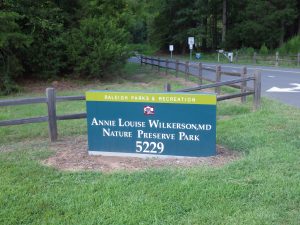
Annie Louise Wilkerson, MD Nature Preserve Park is open to the public Tuesday through Saturday 10 a.m. to dusk, and on Sundays from 1 p.m. to dusk. The Preserve is closed on Mondays. Admission is free. It is located at 5229 AWSL Haven Drive, Raleigh, NC 27614. To arrange group programs contact the Preserve Manager via email at bryan.england@raleighnc.gov . PRESERVE MAP
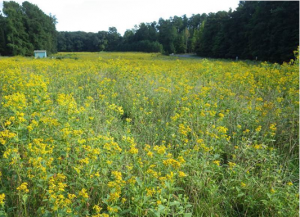
- LeGrand, H., B. Sorrie, and T. Howard. 2021. Vascular Plants of North Carolina [Internet]. Raleigh (NC): North Carolina Biodiversity Project and North Carolina State Parks. Available from https://auth1.dpr.ncparks.gov/flora/index.php.
